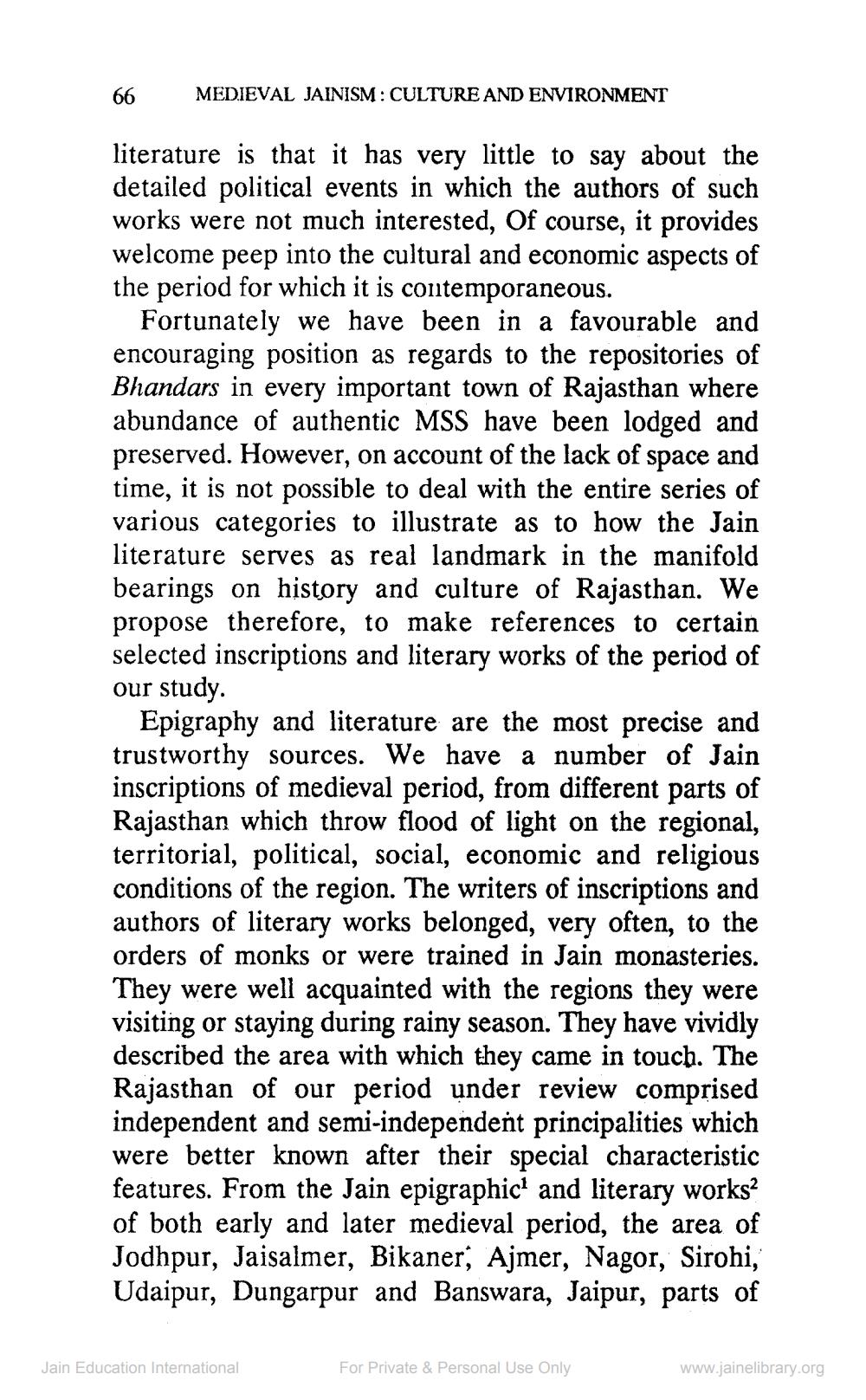________________
66
MEDIEVAL JAINISM : CULTURE AND ENVIRONMENT
literature is that it has very little to say about the detailed political events in which the authors of such works were not much interested, Of course, it provides welcome peep into the cultural and economic aspects of the period for which it is contemporaneous.
Fortunately we have been in a favourable and encouraging position as regards to the repositories of Bhandars in every important town of Rajasthan where abundance of authentic MSS have been lodged and preserved. However, on account of the lack of space and time, it is not possible to deal with the entire series of various categories to illustrate as to how the Jain literature serves as real landmark in the manifold bearings on history and culture of Rajasthan. We propose therefore, to make references to certain selected inscriptions and literary works of the period of our study.
Epigraphy and literature are the most precise and trustworthy sources. We have a number of Jain inscriptions of medieval period, from different parts of Rajasthan which throw flood of light on the regional, territorial, political, social, economic and religious conditions of the region. The writers of inscriptions and authors of literary works belonged, very often, to the orders of monks or were trained in Jain monasteries. They were well acquainted with the regions they were visiting or staying during rainy season. They have vividly described the area with which they came in touch. The Rajasthan of our period under review comprised independent and semi-independent principalities which were better known after their special characteristic features. From the Jain epigraphic and literary works? of both early and later medieval period, the area of Jodhpur, Jaisalmer, Bikaner, Ajmer, Nagor, Sirohi, Udaipur, Dungarpur and Banswara, Jaipur, parts of
Jain Education International
For Private & Personal Use Only
www.jainelibrary.org




